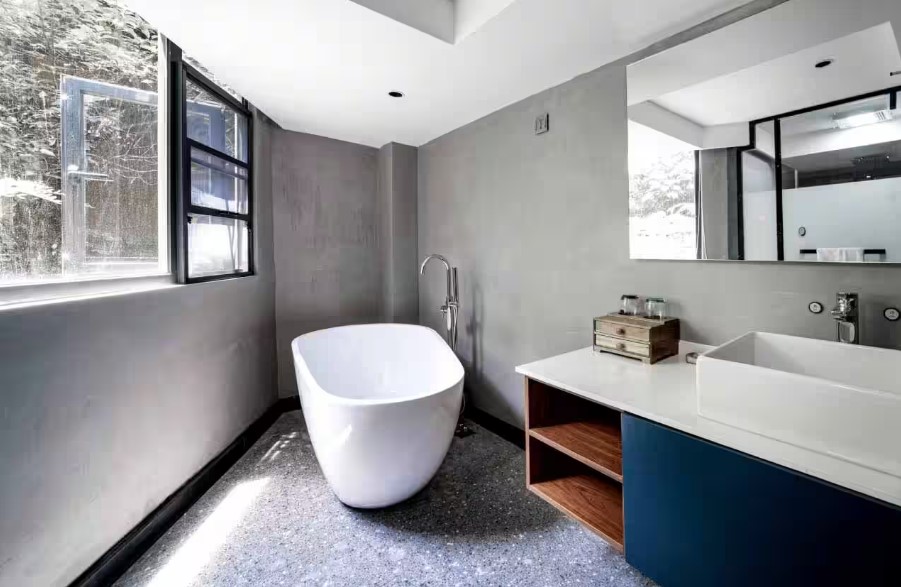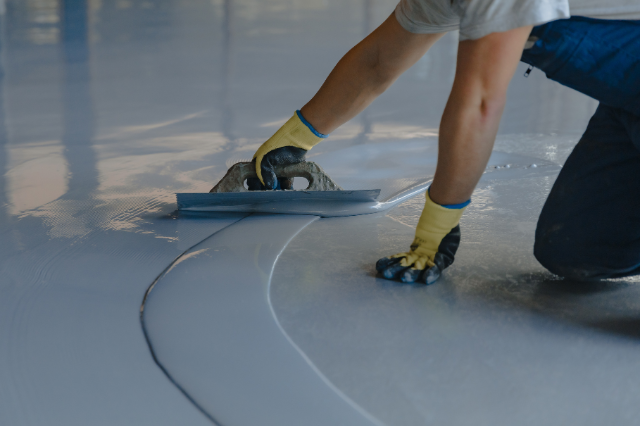Bathroom Ceiling Paint: The Ultimate Solution for Mold and Mildew Prevention

A bathroom is one of the most humid areas in a home, making it a breeding ground for mold and mildew. While proper ventilation and regular cleaning help, choosing the right bathroom ceiling paint is one of the most effective ways to prevent mold and mildew growth. In this guide, we’ll explore the best types of bathroom ceiling paints, key features to look for, and expert tips to keep your ceiling fresh and mold-free.
Why Mold and Mildew Form on Bathroom Ceilings
Mold and mildew thrive in moist, warm environments, making your bathroom ceiling a prime target. Common causes include:
- Poor ventilation – Steam from showers and baths condenses on the ceiling, creating excess moisture.
- High humidity – Bathrooms often maintain humidity levels above 60%, which encourages mold growth.
- Leaky pipes or roofs – Water damage can cause lingering dampness, providing the perfect conditions for mold and mildew.
- Inadequate paint protection – Regular ceiling paint absorbs moisture, leading to peeling, discoloration, and mold formation.
Using mold-resistant bathroom ceiling paint can significantly reduce the risk of these issues.
How the Right Paint Prevents Mold and Mildew
Specialized bathroom ceiling paints are designed to combat moisture and prevent mold from forming. Here’s how they work:
1. Moisture Resistance
Mold-resistant paints have a water-repellent formula that prevents moisture from penetrating the ceiling’s surface. This keeps condensation from seeping into the drywall and creating a mold-friendly environment.
2. Anti-Microbial Properties
Some bathroom ceiling paints are infused with anti-microbial agents that actively prevent the growth of mold and mildew. These chemicals work by killing mold spores before they can take hold.
3. Durable and Washable Finish
High-quality bathroom ceiling paints have a tough, scrubbable finish that allows you to clean away any dirt, stains, or early mold spots without damaging the paint layer.
4. Breathability
Certain paints allow trapped moisture within the ceiling to escape, reducing the chances of condensation buildup and mold formation.
Best Types of Bathroom Ceiling Paint for Mold Prevention
1. Mold-Resistant Paint
Specially formulated mold-resistant paints contain fungicides that prevent mold and mildew from forming. Brands like Zinsser Perma-White and BEHR Premium Plus are excellent choices for long-term protection.
2. Semi-Gloss or Satin Finish Paint
Glossy paints, such as semi-gloss or satin finishes, repel moisture better than flat paints. Their smooth surfaces make it harder for mold spores to attach and easier to clean.
3. Acrylic or Latex-Based Paint
Acrylic and latex-based paints offer superior moisture resistance compared to oil-based alternatives. They also dry quickly and allow some breathability, which helps prevent trapped moisture.
4. Waterproof Ceiling Paint
Some brands offer fully waterproof paints, ideal for extremely humid environments. These paints create a barrier against moisture absorption, further reducing the risk of mold growth.
How to Properly Paint a Bathroom Ceiling to Prevent Mold
Step 1: Clean and Prepare the Surface
Before painting, remove any existing mold or mildew using a solution of one part bleach to three parts water. Scrub the ceiling gently and let it dry completely.
Step 2: Repair Any Damage
Fill any cracks or holes with waterproof caulk or a patching compound. Sand the surface lightly to ensure smooth paint application.
Step 3: Apply a Mold-Resistant Primer
A primer like Kilz Mold & Mildew Blocking Primer provides an extra layer of protection against moisture and mold growth.
Step 4: Paint with Mold-Resistant Ceiling Paint
Apply two coats of high-quality mold-resistant paint, allowing each coat to dry thoroughly. Use a roller for even coverage and a brush for edges and corners.
Additional Tips to Prevent Mold and Mildew on Bathroom Ceilings
✅ Improve Ventilation – Use an exhaust fan or open windows during and after showers to reduce humidity levels.
✅ Use a Dehumidifier – If your bathroom has poor airflow, a small dehumidifier can help maintain optimal humidity.
✅ Clean Regularly – Wipe down ceilings with a mild anti-mold cleaner every few weeks to prevent mold buildup.
✅ Fix Leaks Immediately – Address plumbing issues or roof leaks to prevent excess moisture.
✅ Consider an Anti-Mold Spray – Products like Concrobium Mold Control can be sprayed on ceilings periodically for extra protection.
Final Thoughts
Investing in the right bathroom ceiling paint is one of the simplest and most effective ways to prevent mold and mildew. By choosing mold-resistant, moisture-repellent paint and following proper painting techniques, you can keep your bathroom ceiling fresh, clean, and mold-free for years to come.
If you’re planning a bathroom renovation or just looking to refresh your space, consider upgrading your ceiling paint for long-term protection and peace of mind. 🚿🎨
Would you like recommendations on the best bathroom ceiling paint brands? Let me know in the comments!
Read more article – https://www.hituponviews.com/recover-your-crypto-how-to-retrieve-stolen-funds-from-scammers/.






